On February 16, 2024, a beta version of u-he's new software synth, the Zebralette3, was released. Since it is still in beta, I am not in a position to actively recommend it, but I would like to write this special urgent review of it because of its innovative content. The official release is expected in a few months with some improvements and added features. At that time, it will be available for free download from u-he's website.
In this issue, I will not focus on the specifics of Zebralette 3, but rather what is innovative about it. I would like to focus on the conceptual aspects of Zebralette3. This article was written a few hours after I got the Zebralette3.
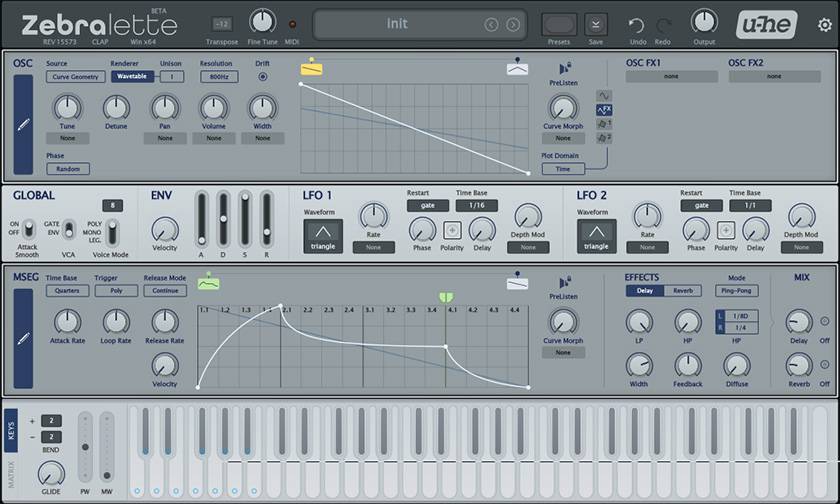
What is the Zebralette3?
Zebralette is a free trial version of Zebra3, a paid synth with an oscillator cut from it. The Zebralette 3 Beta is the oscillator portion of the Zebra3. However, Zebra3 is still under development and doesn’t yet exist. Only the oscillator was released for free as a trial.
Vector Synths
Zebralette3 is an innovative synth. I am not sure how to describe the Zebralette3, but I personally feel that “vector synth” is a more appropriate term, so that is what I will call it here. Thoroughly vector-based oscillators not only mark the arrival of a new synth size, but this concept could play an important role in the future of audio processing. To get acquainted with vectors first, I would like to review the relationship between the image formats of raster and vector.
Raster and Vector in Images
There is a type of raster image that consists of pixels called a bitmap image. As shown in the figure below, if you zoom in, you will see square pixels, which are the smallest unit. When the image is enlarged, it becomes clear that it is not smooth. Therefore, when changing the resolution, interpolation or some other method is required. Raster data becomes large when the resolution is high, and it’s not easy to change the resolution. Although it is necessary to always be aware of the resolution, most image data is created in raster because of its wide range of applications. There are many image formats, and they are used for different purposes.
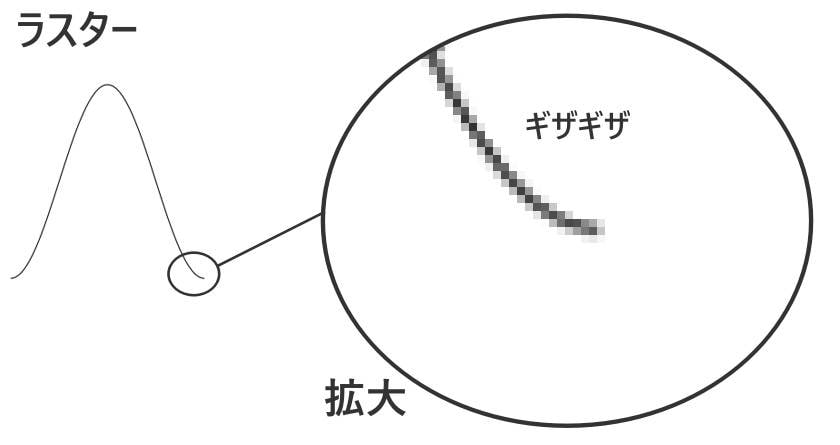
Vector images, on the other hand, consist primarily of point and line information. It is like a blueprint for drawing a figure. The optimum resolution is achieved at the display or printing stage. Below is a screenshot of a vector image, showing a cosine curve with three points. The curve is controlled by handles extending from the points. Vectors are resolution-independent and can be scaled freely. They can also be made lighter by reducing the number of points. SVG is now the standard format for vector images and is used in a variety of situations.
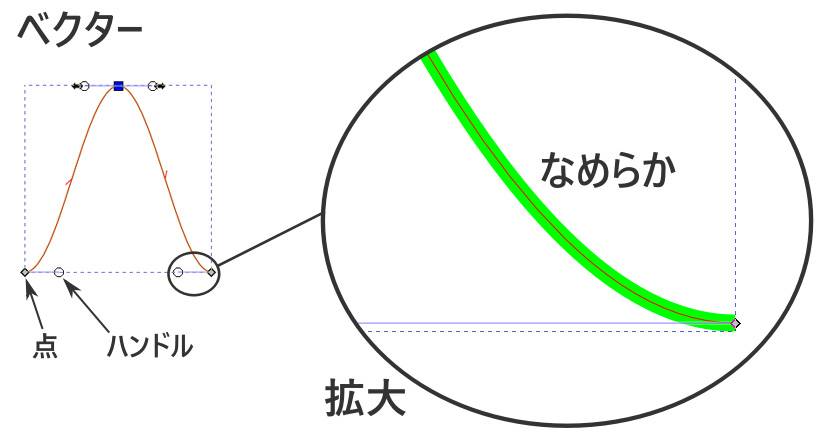
It is not a matter of which is better, raster or vector, but rather the use of both depending on the application. They complement each other to perform various image processing efficiently. Typical software includes Adobe Photoshop and Illustrator. Photoshop is an image processing software that handles raster images, while Illustrator is a drawing software that handles vector images.
Samples and Vectors in Sound
In this section, I will consider sound in the same way as images. However, I do not generally speak of sound in terms of rasters and vectors. Digital audio formats have a fixed resolution called sampling frequency, which is somewhat confusing because there are various sampling frequencies such as 44,100 Hz, 48,000 Hz, 96,000 Hz, and so on. Basically, the higher the frequency, the higher the frequency that can be handled, and the smoother and more natural the sound. However, the sampling frequency cannot be increased unnecessarily because the amount of data increases, processing speed is required, compatible equipment and existing formats are involved, and so on. Also, as with images, changing the sampling frequency is not a good idea because of the need for interpolation.
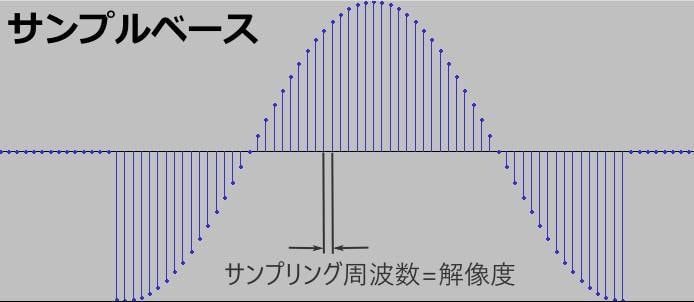
Next is audio vectors, but there is no such format in common use. The Zebralette3 is a sudden entry as a vector synth into a world where only samples (raster) existed. It uses SVG, which is widely used for images, and draws waveforms as curves. However, since the sound cannot be output to a DAW in this form, it is eventually replaced by a sample, but the Zebralette3 uses vectors to process a significant portion of the sound. The figure below shows a cosine wave drawn in the Zebralette3 editor. It looks and operates like a drawing software.
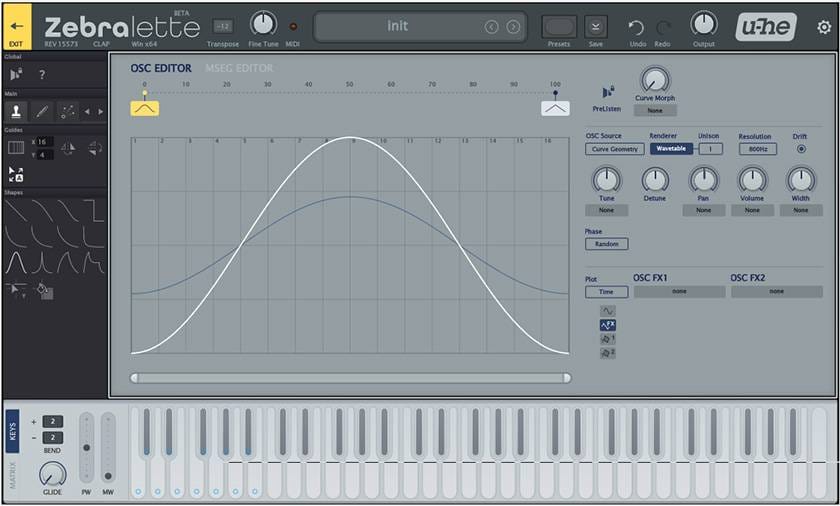
Since it is SVG internally, it can be opened with any draw software that can handle vectors. It can also be opened in a text editor for editing. Below is a cosine drawn with Zebralette3 and opened with a text editor.
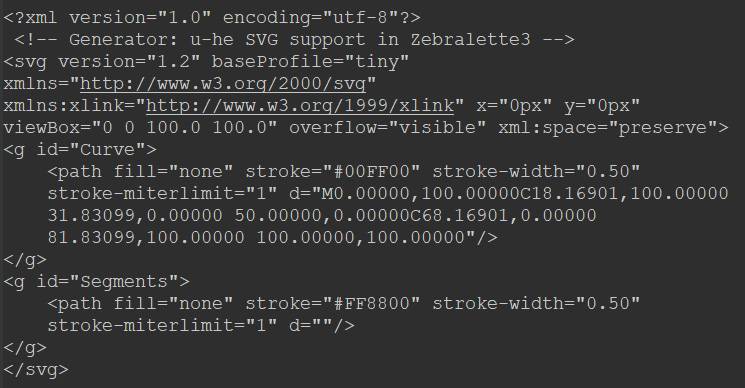
Advantages of Vectoring Oscillators
The synthesis method of zebralette3 switches between wavetable and additive synthesis, but since the basis of the method is vector, it naturally affects the synthesis method itself. The advantage of using a vector oscillator is that it does not depend on resolution, allowing for flexible operation over a wide range of tones. Also, the freedom of morphing between waveforms, which is unique to wavetables, is increased. In addition, oscillators are used not only as oscillators, but also as guides for envelopes and effects. In the video below, I tried morphing from a cosine wave to a sawtooth wave with a Phase Distortion-like idea. It can be made from just two waveforms because you can create the relationship between the moving points. If I were to make this from a sample-based waveform, I would need many frames.
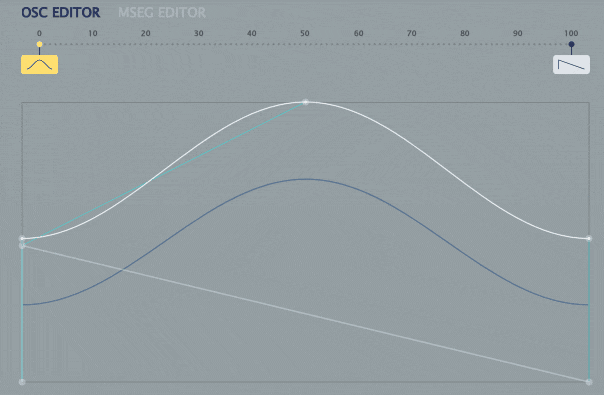
The oscilloscope shows the following.

Brief introduction to synth size
Even though it’s based on a wavetable, it is also additive. Although it has only one oscillator, the FX are more powerful than the old Zebralette, and the modulation is more flexible, allowing you to create sound variations in each stage. It is possible to create normal synth-like sounds with little issue, and it’s also possible to create sounds that were difficult to create with the previous synths. Without a full investigation of its internal behavior, it is difficult to say exactly what it can do, but a few hours of playing around with it won't reveal its limits. I felt that it was particularly strong in percussion sound creation. u-he has been working on a drum synth under the radar for some time, but the load has been too high and the commercialization has been put on hold. Part of it may have been employed in Zebralette3. I got that impression from the high load. I made a sound sample unique to Zebralette3 as a test. I turned off all effects, including internal and external, and used only the Zebralette3 sound. I also tried adding expressions and granularity.
Other noteworthy points
Despite being a free synth, it is also the root of Zebra3, which u-he has been warming up to for years, so a lot of technology has been put into it. To mention a few, first of all, it can handle the UHM language. This is u-he's own programming language for describing waveforms. Until now, there were no synths that could describe waveforms, so I gave up on the idea that it was inevitable due to lack of demand, but u-he is actively working on it. However, it seems that only export is available in the beta version. I think it will be implemented in the official release. When I exported the cosine with UHM, I got the description below. It looks like an extended UHM, unlike the UHM that’s currently available in Hive. It coordinates and handles the information.

Next, it supports a new plug-in standard, CLAP, created by Bitwig and u-he, which shows promise for performance. There are still very few DAWs that support this standard, but Reaper works well with it.
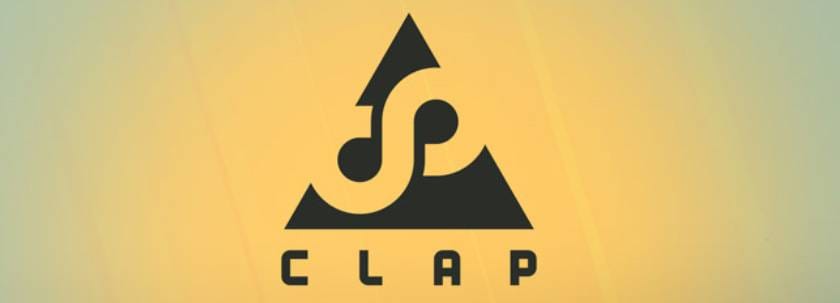
SVG is also used for the UI. Until now, the UI was created using raster png images, but with zebralette3, it is now SVG, both inside and out. In other words, it is now resolution-independent and can be displayed at any size. However, in the beta version, the percentages are fixed as before. The figure below shows a part of the actual UI opened with a drawing software. You can change it to your liking.

Vector processing is heavy.
Conventional Zebra also had a vector-like approach, but it was tuned to the machine specifications of the time. Therefore, there was little flexibility in the waveforms, which were quickly replaced by samples for processing; Zebralette3 uses vector-based processing whenever possible. Not only the oscillator, but also the envelope, MSEG, is a vector. By making full use of these, we are able to do things that were previously difficult. The u-he software synths are famous for their high processing load, but running Zebralette 3 makes Diva and Repro, which have been said to be very heavy, but actually look pretty nice.
The Future
Interest in synthesizers have begun to wane in a sense for the past 20 years, with no innovative voice synthesis methods, although there has been a major trend toward software and emulation. Zebralette3, an innovative vector synthesizer that has been around for a while, is expected to make an impact in many areas in the future. I will review it again when it is officially released.
For more information on Zebralette3, please visit my website, which I constantly update if you are interested.
Achapi's Bicycle Commuting | zebralette3
The “sound & person” column is made up of contributions from you.
For details about contributing, click here.











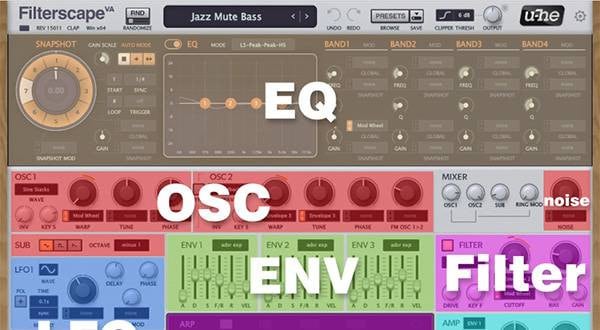
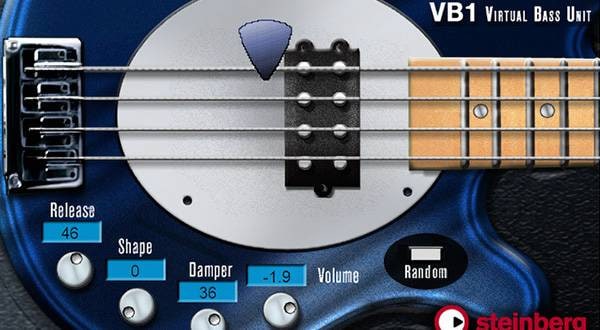
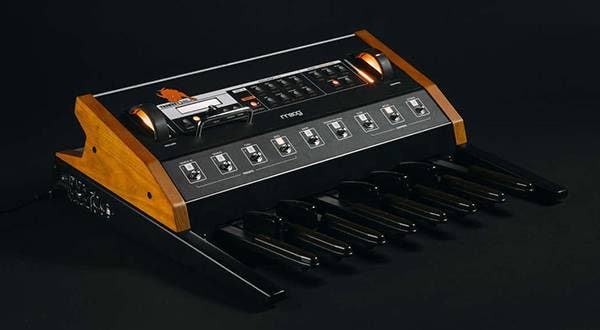
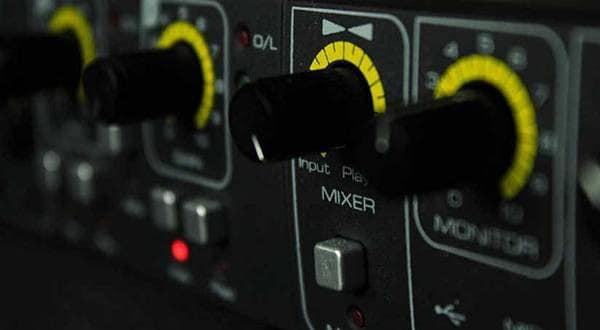
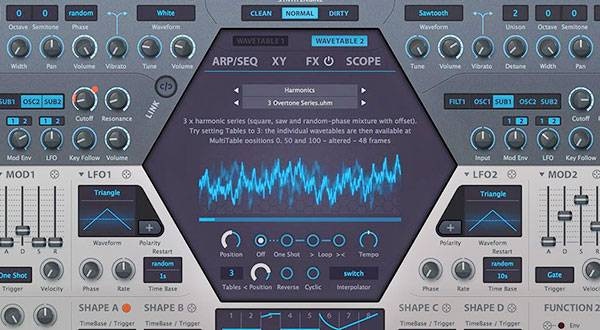
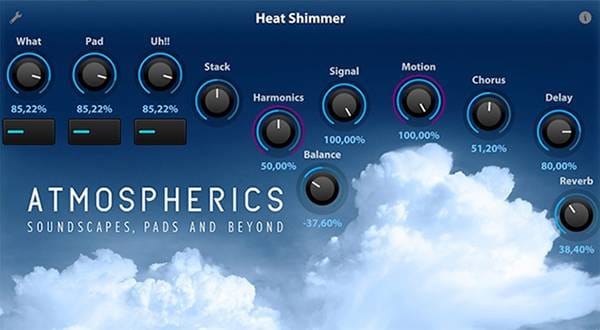
 定番DAWソフトウェア CUBASE
定番DAWソフトウェア CUBASE
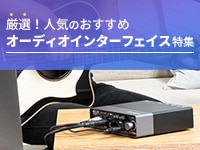 厳選!人気のおすすめオーディオインターフェイス特集
厳選!人気のおすすめオーディオインターフェイス特集
 USB接続対応のMIDIキーボード
USB接続対応のMIDIキーボード
 機能で選ぶ オーディオインターフェイス
機能で選ぶ オーディオインターフェイス
 DTMに必要な機材
DTMに必要な機材
 DTM・DAW購入ガイド
DTM・DAW購入ガイド















